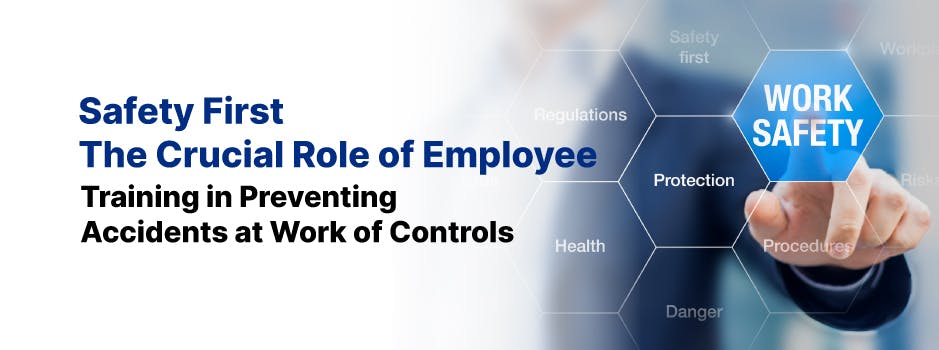Workplace safety is a top priority for businesses worldwide, as accidents and injuries can lead to increased costs, decreased productivity, and damaged reputations. The key to minimizing workplace hazards lies in effective employee training. This comprehensive article will examine the importance of employee training in preventing accidents at work, the various types of training, and best practices for implementing safety training programs.
The Importance of Employee Training in Preventing Accidents
Understanding the risks
Every workplace has its unique set of risks and hazards. These can range from physical dangers, such as slips, trips, and falls, to ergonomic issues, such as repetitive strain injuries. Understanding the risks specific to a workplace is essential for developing effective safety training programs.
Reducing human error
Human error is a significant factor in workplace accidents. Proper training can help employees develop the skills, knowledge, and awareness needed to identify potential hazards and take appropriate action to prevent accidents.
Compliance with regulations
Employers are legally required to provide a safe work environment for their employees. Compliance with safety regulations, such as OSHA standards in the United States, is critical to avoiding fines and potential legal action.
Protecting the bottom line
Accidents and injuries can lead to increased insurance premiums, workers' compensation claims, and lost productivity. By investing in employee safety training, businesses can save money in the long run.
Enhancing company reputation
Companies that prioritize safety are more likely to attract and retain top talent. A strong safety culture can also improve customer perceptions and create a positive brand image.
Types of Employee Safety Training
General safety training
General safety training covers essential safety topics applicable to all employees. Examples include fire safety, emergency response, and first aid.
Job-specific safety training
Job-specific safety training focuses on the unique hazards and risks associated with particular job roles or tasks. For instance, employees working with hazardous materials should receive specialized training on proper handling and disposal procedures.
Equipment-specific training
This type of training is designed for employees who operate specific machinery or equipment. Proper operation and maintenance of equipment are crucial for reducing the risk of accidents.
Ergonomic training
Ergonomic training focuses on teaching employees how to maintain proper posture, avoid repetitive strain injuries, and reduce the risk of musculoskeletal disorders.
Behavior-based safety training
Behavior-based safety training aims to identify and correct unsafe behaviors that contribute to accidents. This type of training focuses on improving employees' decision-making skills and fostering a culture of safety.
Implementing an Effective Safety Training Program
Conduct a hazard assessment
The first step in developing a safety training program is to conduct a thorough hazard assessment of the workplace. Identifying potential hazards allows businesses to tailor their training programs to address specific risks.
Develop a training plan
A well-structured training plan outlines the learning objectives, instructional methods, and evaluation criteria for each training module. The plan should be comprehensive, covering all relevant safety topics, and regularly updated to reflect changes in regulations or workplace conditions.
Choose the right training methods
Selecting the most effective training methods depends on the specific safety topics and the target audience. Some common training methods include classroom instruction, hands-on demonstrations, computer-based training, and online courses. A combination of methods is often most effective.
Engage employees in the training process
Active employee involvement is crucial for the success of safety training programs. Encourage open communication, provide opportunities for feedback, and incorporate real-life examples to make training relevant and engaging.
Provide ongoing training and reinforcement
Safety training should not be a one-time event. Regular refresher courses, toolbox talks, and safety meetings help reinforce key concepts and keep safety top of mind for employees.
Evaluate and improve the training program
Regular evaluation of the safety training program is essential to ensure its effectiveness. Monitor key performance indicators, such as incident rates and near-miss reports, and solicit employee feedback to identify areas for improvement. Continually refine the program to better meet the needs of employees and the organization.
The Role of Management in Promoting Workplace Safety
Leading by example
Managers play a critical role in fostering a safety culture. By demonstrating a commitment to safety and following safety protocols, managers set the tone for the entire organization.
Providing resources and support
Management must ensure that adequate resources are allocated to safety initiatives, including employee training. This includes providing necessary equipment, facilities, and personnel to support the training program.
Encouraging open communication
Creating an environment where employees feel comfortable discussing safety concerns is crucial to identifying and addressing potential hazards. Managers should actively seek employee input and take their concerns seriously.
Recognizing and rewarding safe behavior
Positive reinforcement can be a powerful motivator. By recognizing and rewarding employees who consistently follow safety protocols, management can encourage others to do the same.
Conclusion
Employee training is a vital component in preventing accidents at work. By understanding the risks, providing targeted training, and fostering a strong safety culture, businesses can reduce the likelihood of accidents and create a safer, more productive work environment. Management plays a critical role in promoting workplace safety, from leading by example to providing the necessary resources and support for effective training programs. Ultimately, a commitment to safety is not only good for employees but also benefits the company's bottom line and reputation.

